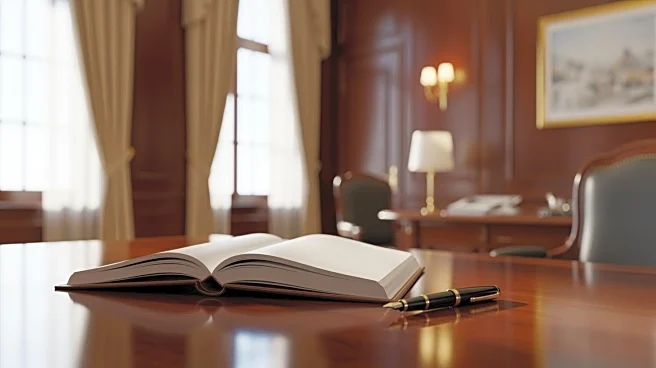What's Happening?
President Trump has expressed anticipation for the Supreme Court's decision regarding his tariff policies, which were implemented under the International Emergency Economic Powers Act. The tariffs have
led to the collection of at least $89 billion, according to Customs and Border Protection data. The Supreme Court heard arguments on November 5 about whether President Trump exceeded his authority in imposing these tariffs. The decision, expected by June 2026, could potentially lead to a refund of the collected tariffs if the court rules against Trump. The case has been expedited due to its significant economic implications.
Why It's Important?
The Supreme Court's ruling on President Trump's tariff authority is crucial as it could redefine the scope of presidential powers in regulating international economic transactions. The tariffs have already generated substantial revenue for the U.S. government, but a ruling against Trump could lead to financial repercussions, including refunds to affected businesses. The decision will also impact U.S. trade relations and could influence future policy decisions regarding international trade and national security. Stakeholders in various industries are closely watching the case due to its potential economic and legal consequences.
What's Next?
The Supreme Court is expected to issue its ruling by June 2026, which will determine the legality of President Trump's tariff policies. Depending on the outcome, there could be significant changes in U.S. trade policy and economic strategy. Businesses affected by the tariffs may seek legal recourse if the court rules against Trump, potentially leading to further litigation and financial adjustments. The decision will also influence ongoing trade negotiations and could impact the U.S.'s approach to international economic relations.













